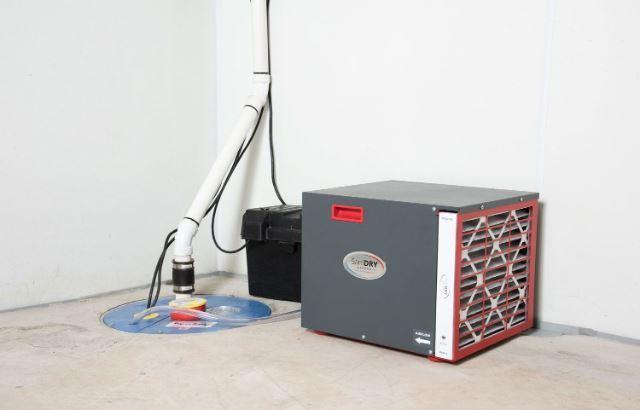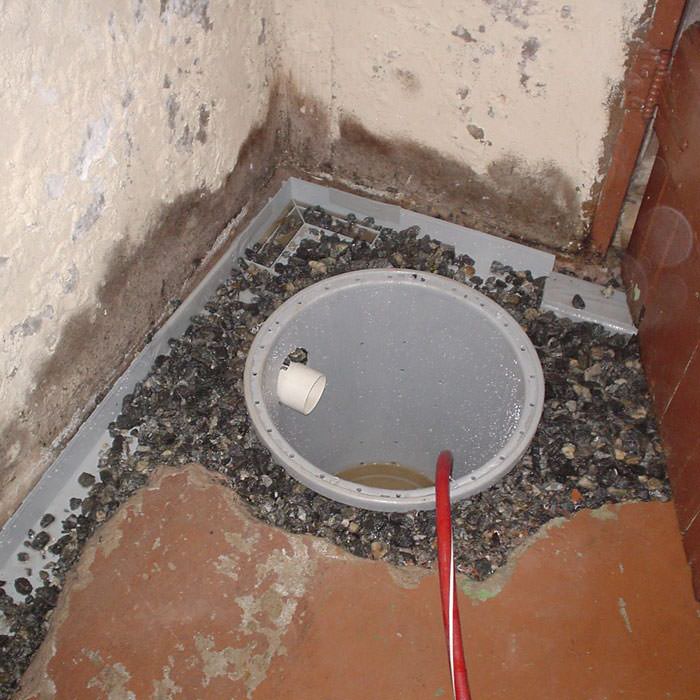Quick Methods to Keep a Sump Pump
Quick Methods to Keep a Sump Pump
Blog Article
The publisher is making a few good pointers about Cleaning & Maintenance Tips for Your Home's Sump Pump as a whole in the article beneath.

Sump pumps are essential elements in many homes, particularly in areas susceptible to flooding or too much moisture. They aid stop water damage by effectively getting rid of excess water from cellars or crawl spaces. Nonetheless, like any other device, sump pumps call for routine upkeep to guarantee they operate efficiently when required the most. Cleansing your sump pump is a crucial part of its upkeep, and recognizing exactly how to do it appropriately can conserve you from costly repairs and possible catastrophes.
Intro
Keeping a clean sump pump is essential for its appropriate performance and longevity. Overlooking this vital job can bring about obstructions, malfunctions, and ultimately, water damage to your building. Consequently, finding out exactly how to clean up a sump pump is important for homeowners who rely upon these gadgets to maintain their cellars completely dry and protected.
Understanding the Sump Pump
Before diving into the cleaning process, it's necessary to have a basic understanding of exactly how a sump pump works. Normally mounted in a pit or basin below the cellar flooring, a sump pump contains a number of vital elements, including a pump, a float button, and a discharge pipeline. When water gathers in the pit, the float switch activates the pump, which after that pumps the water out through the discharge pipeline, far from the building's foundation.
Signs of a Dirty Sump Pump
Understanding when your sump pump requires cleaning is important for avoiding potential malfunctions. Some usual signs that indicate a filthy sump pump include weird noises throughout operation, decreased water circulation, and visible particles in the pit. If you see any one of these signs and symptoms, it's vital to clean your sump pump immediately to stay clear of any additional problems.
Getting ready for Cleansing
Prior to you begin cleansing your sump pump, it's vital to take some safety and security precautions. Begin by turning off the power to the pump to prevent any type of electrical crashes. Additionally, put on suitable safety equipment, such as gloves and goggles, to shield yourself from dirt, particles, and prospective virus.
Step-by-step Overview to Cleaning Up a Sump Pump
Shutting down the Power
Begin by detaching the power supply to the sump pump to prevent any type of accidents while cleaning.
Eliminating Debris and Dust
Utilize a pail or an inside story to get rid of any type of visible debris, dirt, or sediment from the sump pit. Dispose of the particles correctly to avoid it from clogging the pump or the discharge pipe.
Cleaning up the Pump and Drift Switch Over
As soon as the pit is free from particles, thoroughly remove the pump from the pit. Evaluate the pump and the float button for any kind of indicators of damage or wear. Utilize a soft brush or cloth to clean the surface areas and get rid of any type of built up grime.
Flushing the System
After cleansing the pump and float button, flush the sump pit with tidy water to eliminate any kind of continuing to be dirt or debris. This will certainly assist guarantee that the pump runs smoothly and successfully.
Checking for Correct Performance
Before reinstalling the pump, carry out a quick examination to ensure that the float switch activates the pump correctly. Pour some water into the sump pit and observe the pump's operation. If everything is functioning correctly, you can rebuild the pump and reconnect the power supply.
Upkeep Tips to Maintain Your Sump Pump Clean
In addition to periodic cleaning, there are a number of maintenance pointers you can comply with to maintain your sump pump in optimal condition:
Verdict
Cleaning your sump pump is an essential element of its maintenance and makes certain that it operates effectively when you require it one of the most. By complying with the actions described in this overview and including routine upkeep right into your regimen, you can expand the lifespan of your sump pump and shield your home from water damage.
6 STEPS ON HOW TO CLEAN A SUMP PUMP PROPERLY
UNDERSTANDING SUMP PUMPS
Your sump pump plays a crucial role in protecting your home by managing and removing excess water. It primarily functions as a “shield”, guarding your basement against the damaging effects of water accumulation. The pump is housed in a sump pit in the lowest part of your basement, and its job is to pump out any water that collects there.
During heavy rainfalls or when snow melts rapidly, water can infiltrate your basement, posing potential risks like flooding, structural damage, and harmful mold growth. Here, the sump pump springs into action, pumping out the intruding water and directing it away from your home.
SAFETY FIRST
Before cleaning, remember to prioritize safety. Disconnect the sump pump from the power source to prevent any accidental electric shocks. Also, wear sturdy gloves to protect your hands from any sharp or dirty components within the pump.
REMOVE THE SUMP PUMP
After ensuring your safety, the next step is to remove the sump pump from its pit. Doing this might require careful maneuvering as you don’t want to damage any pump components. Once removed, clean the sump pit to remove any accumulated debris or sludge.
INSPECT THE PUMP
Inspect the pump for any visible signs of wear or damage. Check the power cord, float switch, and impeller housing. If any components look worn out or damaged, consider replacing them to ensure optimal performance.
CLEAN THE PUMP
Thoroughly clean the pump with warm, soapy water. Make sure to rid it of any dirt, gravel, or other debris that might impede its performance. You can use a toothbrush to clean the small, hard-to-reach parts of the pump.
REINSTALL THE SUMP PUMP
Reinstall the pump into the sump pit Make sure it’s positioned correctly to remove the water effectively Once it’s back in place, reconnect it to the power source TEST THE PUMP
Finally, pour some water into the pit to ensure the pump works correctly. It should start automatically and begin pumping out the water; if it doesn’t, check the power source and the positioning of the pump.
Remember, while cleaning your sump pump is an essential part of home maintenance, hiring a professional plumber for a thorough inspection and cleaning at least once a year is also important. This will ensure that your pump is in optimal condition, ready to protect your home from potential water damage.
BEST PRACTICES FOR CLEANING SUMP PUMP DISCHARGE PIPES
Regular Inspection: Regularly inspect your discharge pipes, especially during heavy rainfall or snowmelt periods. Look for any signs of blockage or damage. Early detection of problems can prevent serious issues down the line. Periodic Cleaning: Over time, sediment and debris can accumulate in the discharge pipes, impeding the flow of water. Regular cleaning helps keep the pipes clear and functioning efficiently. You can use a high-pressure water jet to effectively clean the pipes. Insulation During Winter: In colder climates, discharge pipes can freeze, blocking the outflow of water. Protect your discharge pipes from freezing temperatures by insulating them with foam pipe insulation. This will ensure the sump pump can continue to discharge water even in freezing conditions. Proper Positioning: The discharge pipe should be positioned to direct water away from your home’s foundation. Improper positioning can lead to water seeping back into the basement. Ensure the pipe is long enough and angled correctly. Installation of a Check Valve: A check valve prevents water from flowing back into your sump pit after the pump has pushed it out. Installing a check valve helps maintain the efficiency of your sump pump and reduces the risk of flooding. Minimize Pipe Turns: Every curve or turn in the discharge pipe can decrease the efficiency of water flow. By minimizing turns and bends in your discharge pipe, you can increase the efficiency of your sump pump. https://www.fullspeedplumbing.com/how-to-clean-a-sump-pump-properly9999/

I am just very fascinated with How to Care for Your Sump Pump and I really hope you liked my blog posting. Are you aware of anybody else who is in to Steps to Cleaning Your Sump Pump Properly? Feel free to promote it. Thank you so much for your time spent reading it.
Try Here Report this page